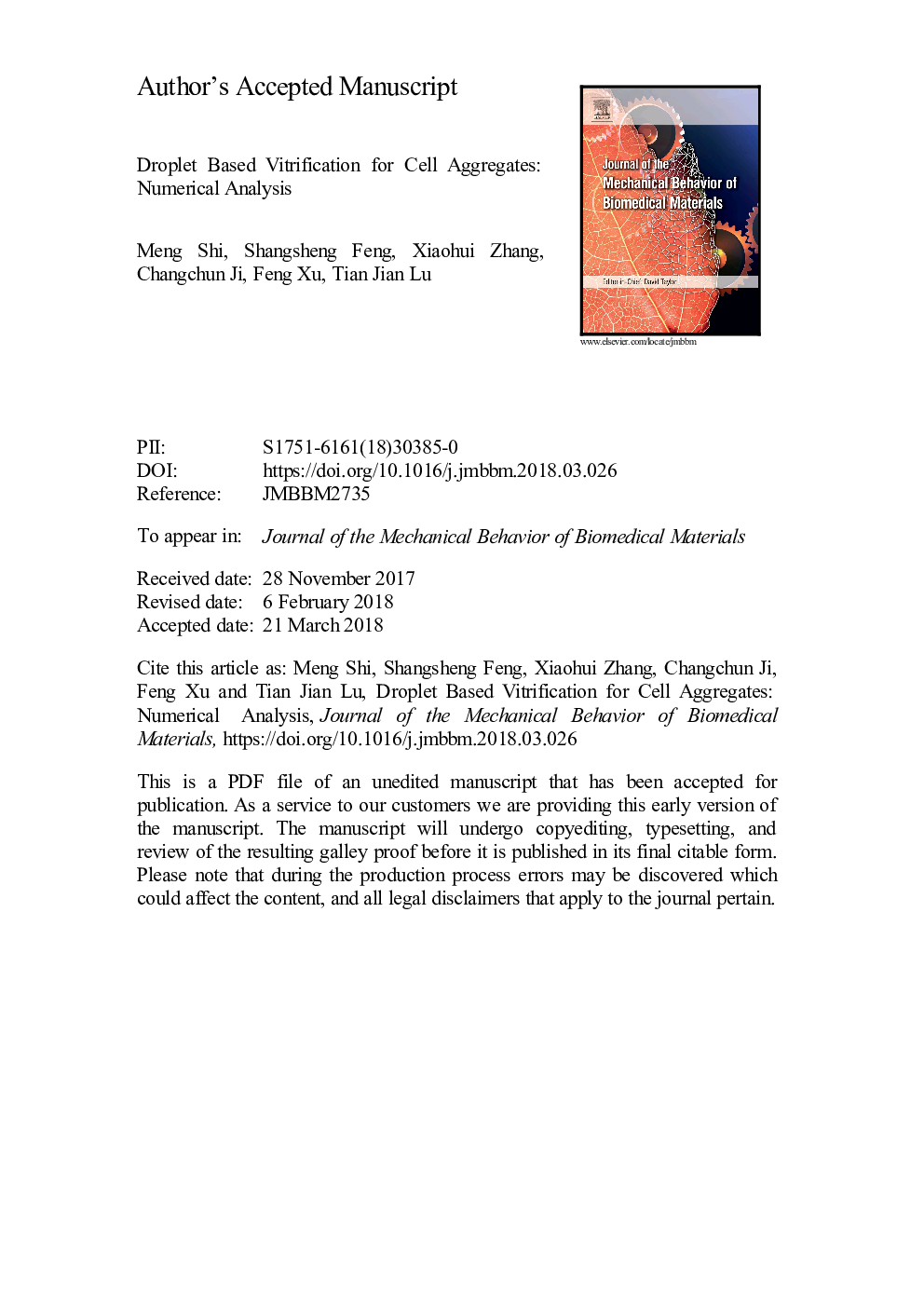| Article ID | Journal | Published Year | Pages | File Type |
|---|---|---|---|---|
| 7207089 | Journal of the Mechanical Behavior of Biomedical Materials | 2018 | 36 Pages |
Abstract
Cell aggregates represent the main format of cells existing in vivo and have been widely used as tissue and disease models in vitro. Nevertheless, the preservation of cell aggregates while maintaining their functionalities for off-the-shelf applications is still challenging. Among various preservation methods, droplet-based vitrification exhibits superior advantages for the cryopreservation of cell aggregates; however, the physical mechanisms underlying droplet-based vitrification of cell aggregate using this method remain elusive. To address this issue, we proposed a voronoi model to construct two-dimensional geometric morphologies of cell aggregates and established a coupled physical model to describe the diffusion, heat transfer and crystallization processes during vitrification. Based on these models, we performed a numerical study on the variation and distribution of cryoprotectant (CPA) concentration, temperature and crystallization in cell aggregates during droplet-based vitrification. The results show that although cell membrane is not an obvious barrier in heat transfer, it affects the diffusion of CPA remarkably as a biologic film and thus the following crystallization in cell aggregates. The effective protection of CPA during vitrification occurs during the initial stage of CPA diffusion, thus a longer CPA loading time does not necessarily lead to significant decrease in crystallization, but rather may induce more toxicity to cells.
Related Topics
Physical Sciences and Engineering
Engineering
Biomedical Engineering
Authors
Meng Shi, Shangsheng Feng, Xiaohui Zhang, Changchun Ji, Feng Xu, Tian Jian Lu,
